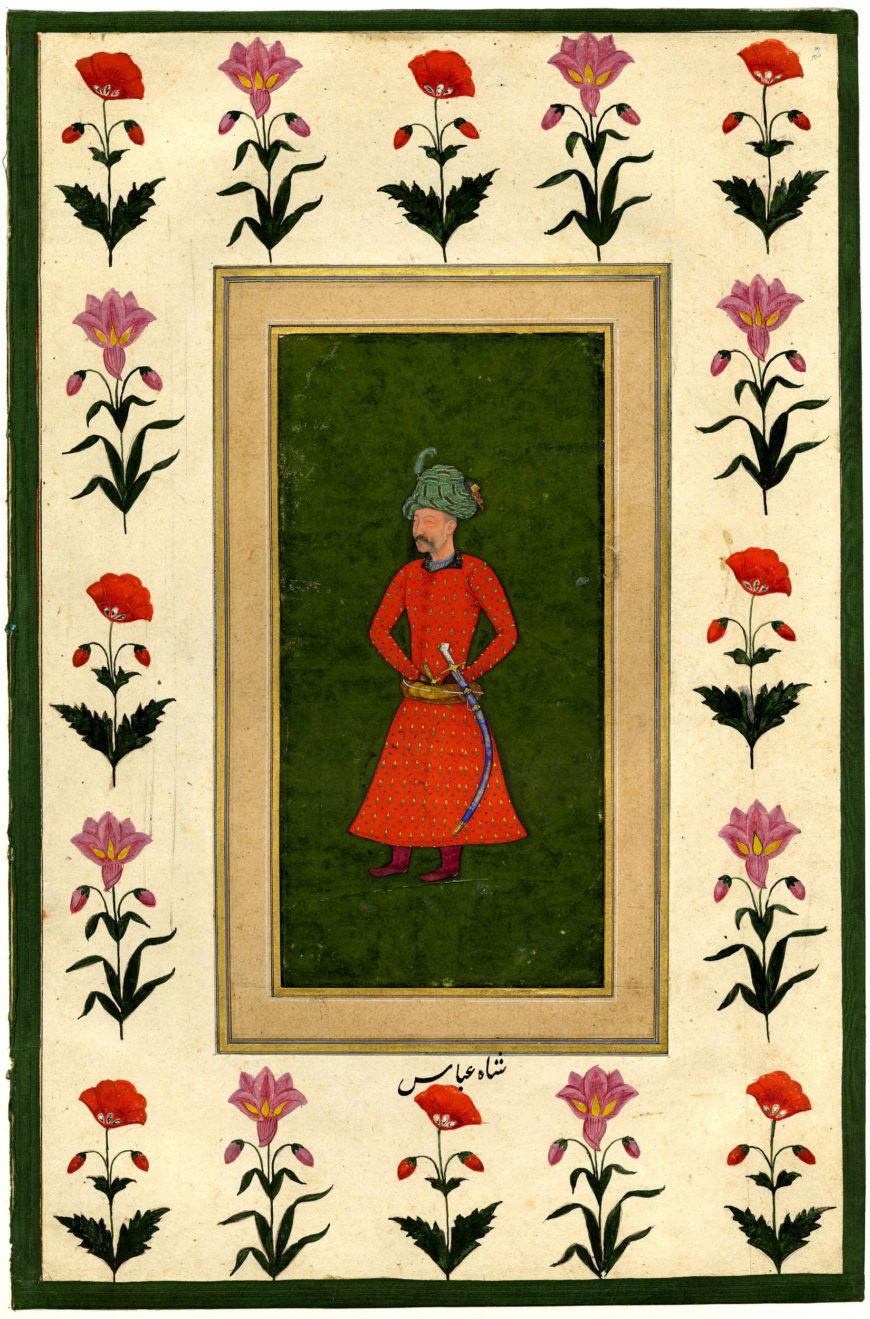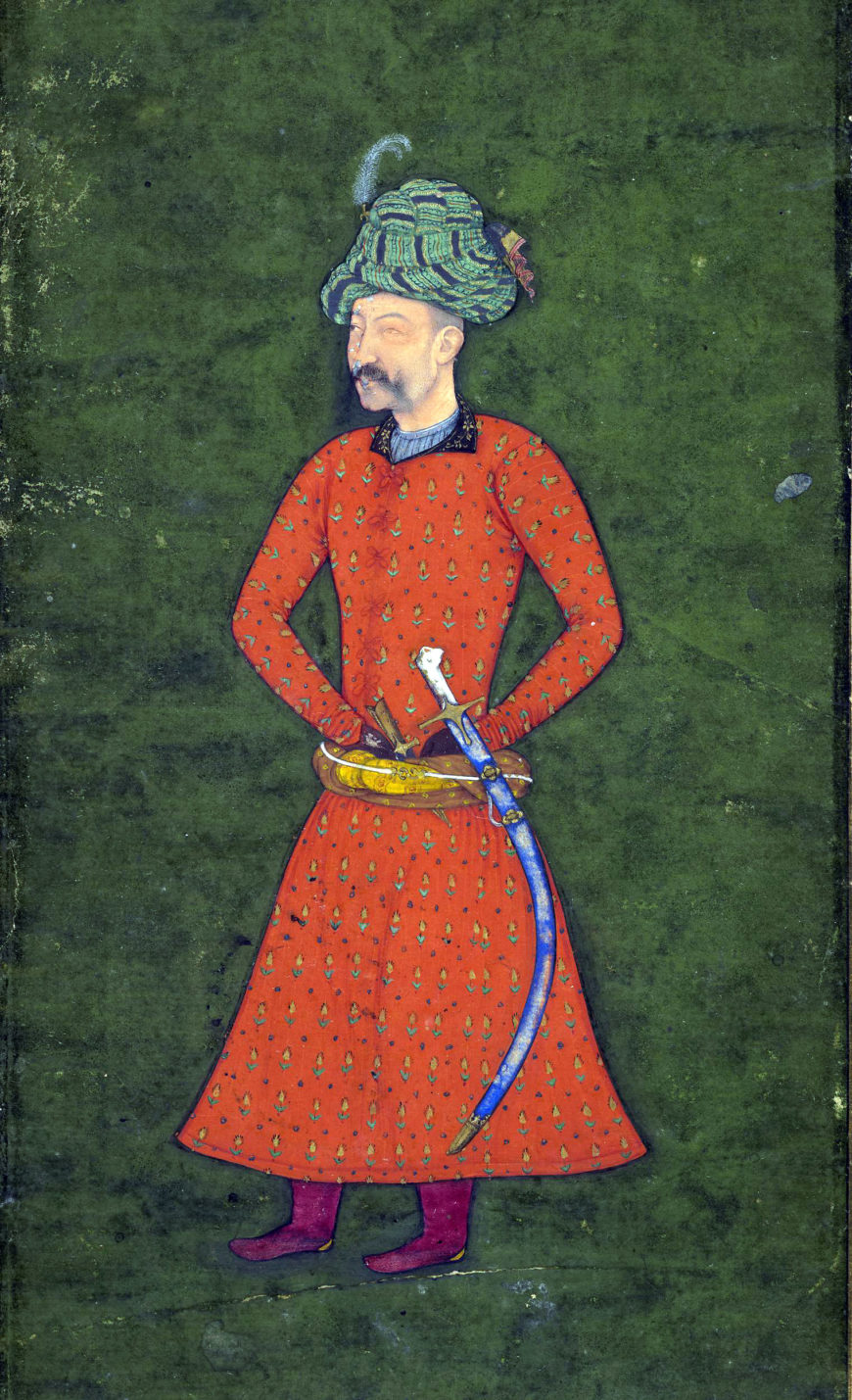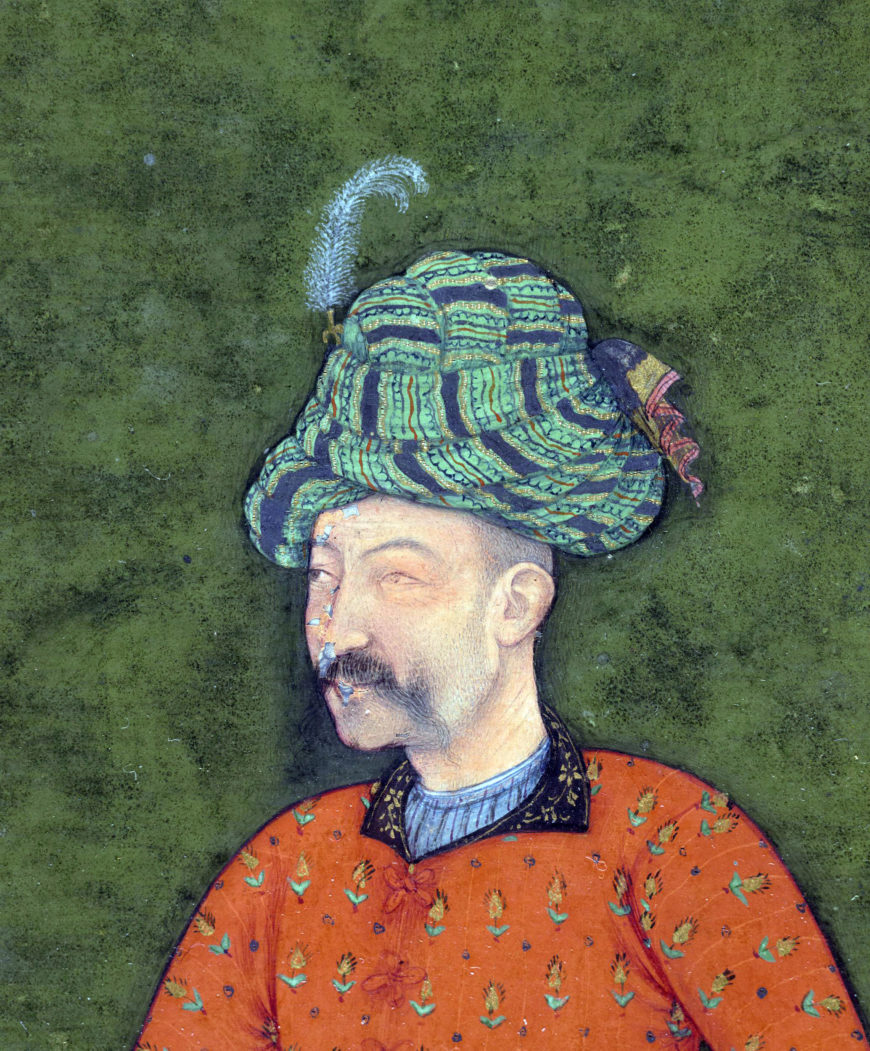
Portrait of Shah ‘Abbas I of Iran, attributed to Bishn Das, c. 1618, Mughal India, 18.1 x 9 cm (© The Trustees of the British Museum)
This portrait shows Shah ‘Abbas I (1571–1618) at the peak of his powers, having ruled Iran for 31 years. It is one of only two complete contemporary portraits of Shah ‘Abbas and is a study made in 1618 by Bishn Das, the leading court artist of the Mughal emperor Jahangir (reigned 1605–27), for a work commemorating the meeting of Shah ‘Abbas and Khan ‘Alam, the ambassador of Mughal India.

Portrait of Shah ‘Abbas I of Iran, attributed to Bishn Das, c. 1618, Mughal India, 18.1 x 9 cm (© The Trustees of the British Museum)
By 1618 Shah ‘Abbas had achieved many of the ambitions of the first half of his reign. He had quelled a civil war, defeated his Uzbek enemies in the east, signed a peace treaty with the Ottomans and moved his capital to Isfahan. His trade and land policies had stimulated Iran’s economy. Although he had already begun to exhibit exceptional cruelty towards his own sons, his power in the second decade of the seventeenth century was unassailable. Yet, rather than stress his grandeur, the artist has evoked his intelligence and fitness.
The simplicity of the green background and the Shah’s pose encourage the viewer to focus on his face, which gives an impression of quiet confidence. His long drooping mustache, for which he was renowned in Europe and India, is clearly prominent.

Portrait of Shah ‘Abbas I of Iran, attributed to Bishn Das, c. 1618, Mughal India, 18.1 x 9 cm (© The Trustees of the British Museum)
Likenesses of rulers and dignitaries played a significant role in diplomacy, enabling sultans and shahs to assess the physical characteristics of their allies and adversaries. Jahangir demonstrated his appreciation of Bishn Das’s depiction of Khan ‘Alam’s embassy by presenting the artist with the gift of an elephant upon his return to India.
© The Trustees of the British Museum

